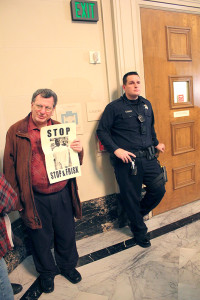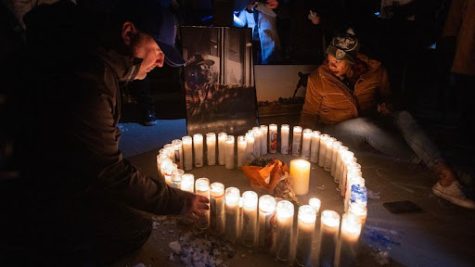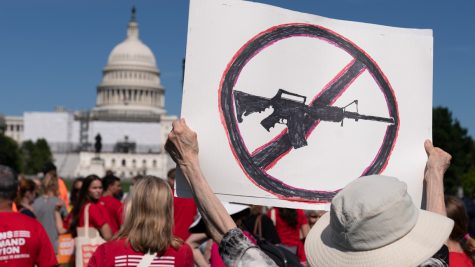Oakland Police to Receive Outside Help

hearing of William Bratton’s hire
on Jan. 22.
Friday night Art Murmur was silenced as gunshots echoed on 23rd & Telegraph Ave. on Feb. 1. One teenager was killed, while three others were injured.
An event that was supposed to celebrate Oakland artists became a chilling reminder of the violence in Oakland.
The recent city council meeting discussed solutions to this problem and among them was veteran officer and security contractor William Bratton.
Forbes magazine recently ranked Oakland the third most dangerous city in the country, up from sixth in 2011. The city also topped the list nationwide in violent robberies, and had its highest homicide rate in five years.
The city of Oakland hired Bratton for his reputation in the Boston PD, NYPD, and LAPD for decreasing crime with a unique focus of policing in crime ridden cities. Bratton is also currently holding a contract with Detroit.
Bratton gained notoriety with the NYPD using the “broken-windows theory,” which suggests smaller criminal activity such as graffiti or breaking windows perpetuates larger crimes over time. This focus was instituted in 1994, while Bratton was with the NYPD. The decrease in violent crime, which started with Bratton, continues as New York City boasted its lowest recorded homicides in 2012.
Most notable of Bratton’s policies is the controversial “stop and frisk.” Concerns of racial profiling and unconstitutional practices were voiced by Oakland community members at the Jan. 22 city council meeting.
To avoid this, both Bratton and Oakland’s Chief of Police, Howard A. Jordan, stress the importance of training officers. The “stop and frisk” training educates officers about the U.S. Supreme Court’s decision which states, “an investigative stop must be justified by some objective manifestation that the person stopped is, or is about to be, engaged in criminal activity.”
If officers know the limits to “stop and frisk” it will be a more legitimate tactic instead of a racial profiling tool promoting distrust between the community and police, said Jordan in a letter to the community.
Each police department presents unique issues. Before LAPD hired Bratton, the police were concerned with a growing amount of paperwork instead of patrolling.
“Bratton had the police go back to the streets,” an LAPD veteran explained, “He emphasized police need to do their jobs as police.”
Many Oakland residents voiced their dissatisfaction with Oakland Police Department’s response time.
“The first time I called OPD it wasn’t until 24 hours later they came to file the report,” Oakland resident Kevin Thomas said. “Houses are being broken into systematically … Someone two blocks away called during a burglary in progress, called 911 and was on some holding cue for three to four minutes.” During that time the burglars drove away.
Bratton is a strong supporter of the system known as ComStat, a mapping tool which indicates crime and shows where officer presence is best utilized.
Oakland’s police force has suffered budget cuts, contributing to the problems. Since 2010, OPD has been operating with only two-thirds of the officers suggested for its population. As a response, the city council hired 21 civilians to free officers from paperwork to do more patrols, as well as 10 sheriffs assisting on patrols.









